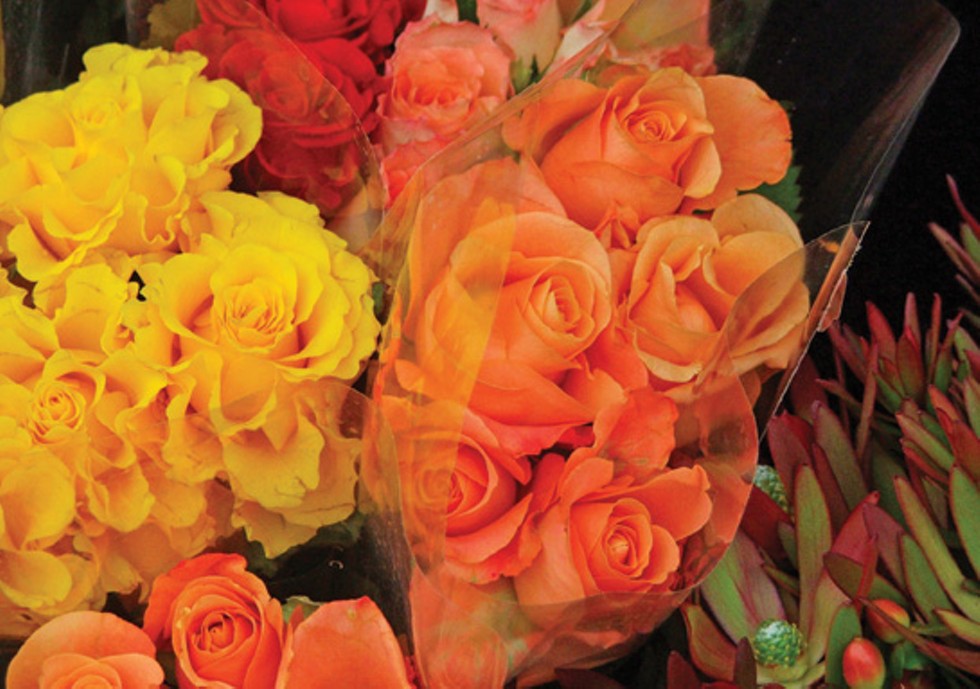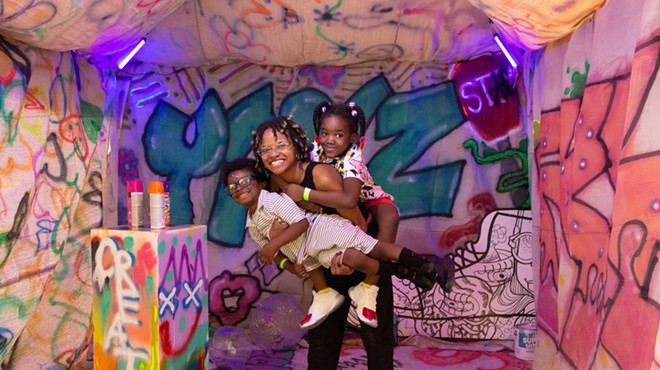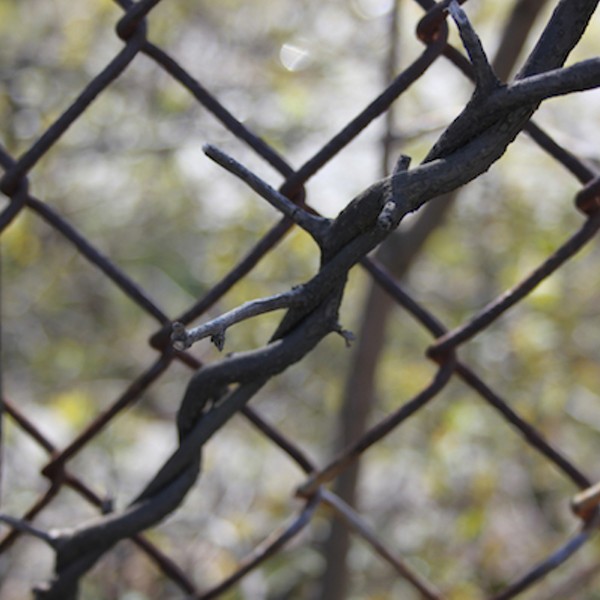When I first started writing for Chronogram, I succeeded in causing a controversy.
Oh really? you say. And how was that?
Well, I wrote a three-part series on polyamory—that is, on what some call "responsible nonmonogamy" and others call "open relationships." I guess this was around 1997. It seems like so long ago. I started the first of the three articles by coming out of the closet as polyamorous; I thought it was a good idea to get that fact out of the way. I love relationships and the art of relating, and I like to connect with whomever it feels right to relate to, in whatever way is mutually agreeable. (Trust me, those terms and conditions don't leave a lot of room for the anarchy you may think is brewing.)
I described my motivations and a bit about my experiences, and mentioned that there exist a significant number of people who either are polyamorous or want to be, but who don't quite feel comfortable speaking up. Sometimes, though, just learning the word has a way of setting someone free—I've heard that a lot. Other people, though, can get quite defensive, as if the one and only legitimate form of relationship is being compromised. Jason Stern, one of the founders of Chronogram who was then its editor, said that he was hearing about the series from people even five years later. Five years! You know, the usual complaints about how his writer was going to bring down Western civilization and so forth.
Today, the topic has been covered by everyone from Newsweek to Huffington Post and appears as a regular feature on the website of Psychology Today. Polyamory has been discussed on the pages of the New York Times, the Washington Post, the Boston Globe, and the Independent (UK). There is a very nice blog with archives going back to 2005 that is devoted to keeping up with all the news coverage and analysis polyamory gets. It's called "Polyamory in the News" and it will come up with Google's "I'm Feeling Lucky" option. There are so many news and website references to polyamory that it's both impressive and funny. The archives are brimming with this open secret, and the stories are generally balanced, describing well-adapted adults making choices about the structure of their families.
But before I go on, let me say this.
You read it here first.
If you were reading Chronogram at the time, you read it before the LGBTQ movement had its wings or its many letters; you read it here before it was cool to come out; and you read it nine years before the word polyamory was added to the Oxford English Dictionary in 2006. Here is how those erudite scholars define the word: "The fact of having simultaneous close emotional relationships with two or more other individuals, viewed as an alternative to monogamy, esp. in regard to matters of sexual fidelity; the custom or practice of engaging in multiple sexual relationships with the knowledge and consent of all partners concerned."
In other words, not Tiger Woods. And not King Henry VIII, about whom the term polyamorist was used in 1953 to describe him, in the Illustrated History of English Literature, Volume 1 by A. C. Ward. This may have actually been the first iteration, and in a sense Henry was polyamorous in the eyes of the church. Today, he would be called a "serial monogamist," which I think is an oxymoron; I prefer "serial polyamorist" for those who have their relationships in a long sequence.
While relatively few people openly identify as polyamorous, there are many who are so in practice. Many others are curious. Many are eager to open up their relationships, and not just because they want some sexual variety; they also crave the bonding, growth opportunities, and expanded community that come with doing so. And yes, some grounded sexual freedom feels really good.
Mixers, Potlucks, and Jealousy
There exist many methods and styles of polyamory; I will describe them to the degree necessary to help you check whether you identify with one or more. What I'm really here to do is get some poly action going in the Hudson Valley. So far as I know, if you want to go to a poly mixer or potluck or other event (such as a talk or a workshop) you have to drive down to New York City, which in my opinion is a long way to travel for a date. If I'm mistaken and you're part of a poly network that I haven't heard of, please get in touch.
There are enough of us up here, tucked away in the hills and towns, to have some interesting social fun, to get to know one another, and to get the cider fermenting. For those who might hesitate, I can assure you that once a concept has made both Newsweek and the Oxford English Dictionary, it is sufficiently mainstream that you don't have to mutter "I'm not so weird, I'm not so weird" under your breath on the way to your first potluck dinner. This, by the way, I will host in my photo studio Valentine's Day weekend (contact instructions are at the end of this article). Am also open to doing evening or day workshops (I have presented dozens—everywhere but locally). Perhaps seeing if a local establishment is open to hosting a public mixer once a month. We can publicize that, and find out who we are.
Here is something you may not have thought of, vis-à-vis poly. We can all name gay and lesbian celebrities. Can you name one openly polyamorous celebrity? Obviously they exist. But who are they?
Poly folk have a few odd things in common. We tend to be a bit bookish. We love a good theory; we tend to read and write about our way of life. A lot of talking is involved. There's a fantasy among many that being poly is like one endless night in the old Penthouse mansion at the peak of the 1970s. Every now and then it might be, though usually it's pretty different from that. Some of us consider ourselves social engineers, helping design and build better structures and concepts of human interaction. Most of us just want to love the way it's natural for us to love.
The poly movement got its start in science fiction novels, particularly Stranger in a Strange Land by Robert A. Heinlein. The upshot of that story is that a human born and raised on Mars, by Martians (named Valentine Michael Smith), was returned to Earth by his foster parents. He lacked the typical human hang-ups (guilt, body shame, mendacity, limits imposed on his capacity to love) and, as a result, he manifested a very friendly scene. He was a good kisser.
That was a book. It turns out that nonfiction humans are less monogamous than they claim to be. But the thing that makes a person polyamorous is being up front about that fact.
Then two questions always arise: What about jealousy? and What about the kids?
Jealousy is a factor in most relationships, particularly monogamous ones. As we all know, presumed exclusivity does not address the issue itself. Usually it's swept under the rug by the presumption of monogamy or by not telling one's partner about an affair because "that would hurt them." Polyamory takes jealousy as a teacher. The matter is put right out onto the table. When you can look at it, it's no longer the daunting monster that it seems to be when left in the closet. It becomes the basis of a growth and healing process designed to unearth and address the insecurity, envy, and lack of self-esteem beneath the surface.
One of the first concepts that anyone stepping into polyamory finds out about is compersion. That is the experience of being turned on by the love and pleasure of the people you care about. Some say it's the opposite of jealousy; I say it's an alternate universe of a world where jealousy is a ubiquitous toxin. Compersion is like taking a Buddhist approach to relationships. It is an emotion, but it's also an approach to existence. It is the equivalent in polyamorous relationships to oxygen in the biological world.
As for the kids, I don't think that any conventional form of relationship can, in practice, claim to be inherently good for kids. Rather, it's how we conduct those relationships: the content rather than the form. There are some truly functional marriages—but not all of them are. Monogamy used to be set in the context of an extended family. There was always a sister, aunt, or uncle around to watch the kids. In many contemporary marriage-based households where two parents work, the kids are neglected. If the parents don't get along, the kids will suffer no matter how monogamous the parents are.
Most people practice what they call "serial monogamy," which typically means instability and lack of real support that a more stable form of relationship would provide. That is not a good environment for kids. Many of us raised since the '70s and '80s are the products of this relationship style.
Polyamory opens up a world of possibilities to remedy this and to explore creative experiments. It's designed to create a stable environment, which, if it does not automatically work, is at lest workable. At the heart of the concept of polyamory is the notion of sustainability; this is related to conscious family and household design.
Triads, Panfidelity, and Intimate Networks
In the space remaining, let me introduce you to three kinds of polyamorous relationships, to give a sense of the diversity. I'm going to explain them using "I" statements for consistency.
The Triad I'm in a pair-bonded couple. My partner meets a man she likes and begins seeing him socially. I encourage her to explore if she wants to; I've met him and I get along with him. She's open about their experiences with me. They are both respectful of our primary partnership. They get closer and want to explore sexually. I'm open to this. Jealousy is not an issue because I think her sexuality is beautiful no matter how she expresses it. There are many other possibilities for triads, including situations where all three partners are sexually and emotionally involved.
Panfidelity I am in a long-term relationship with my lover on the East Coast, where I live. I have a friend and sometimes lover on the West Coast who predates this relationship by years. We are close friends and have a deep understanding. A few times a year, we meet up somewhere and spend time together. Our other relationships accommodate this because we've been open about it with new partners from the outset. There are other forms of panfidelity, which all involve long-term, committed polyamorous situations.
Intimate Network I prefer to live independently. I have a number of friends, locally and around the country, with whom I am emotionally close and can be sexually open. I also have one or two "friends with benefits." I enjoy closeness and sexual variety but I don't want to be in a traditional pair-bonded situation or household-based relationship. I prefer my social freedom and I want to keep my options open.
There are many other forms of polyamory, which is really an umbrella term that covers all the possibilities. What they all have in common is an ethos of honesty and authenticity. Love is offered in a spirit of freedom, and when challenges arise, the people involved are prepared to work them out.
As for That Valentine's Weekend Potluck
Now for the action piece. If you're interested in coming to my Valentine's Weekend Poly Potluck, write to me at [email protected]. Tell me a little about yourself and your interest in polyamory, and please include contact information. The curious are welcome. Bring a friend or lover. Or two.






























